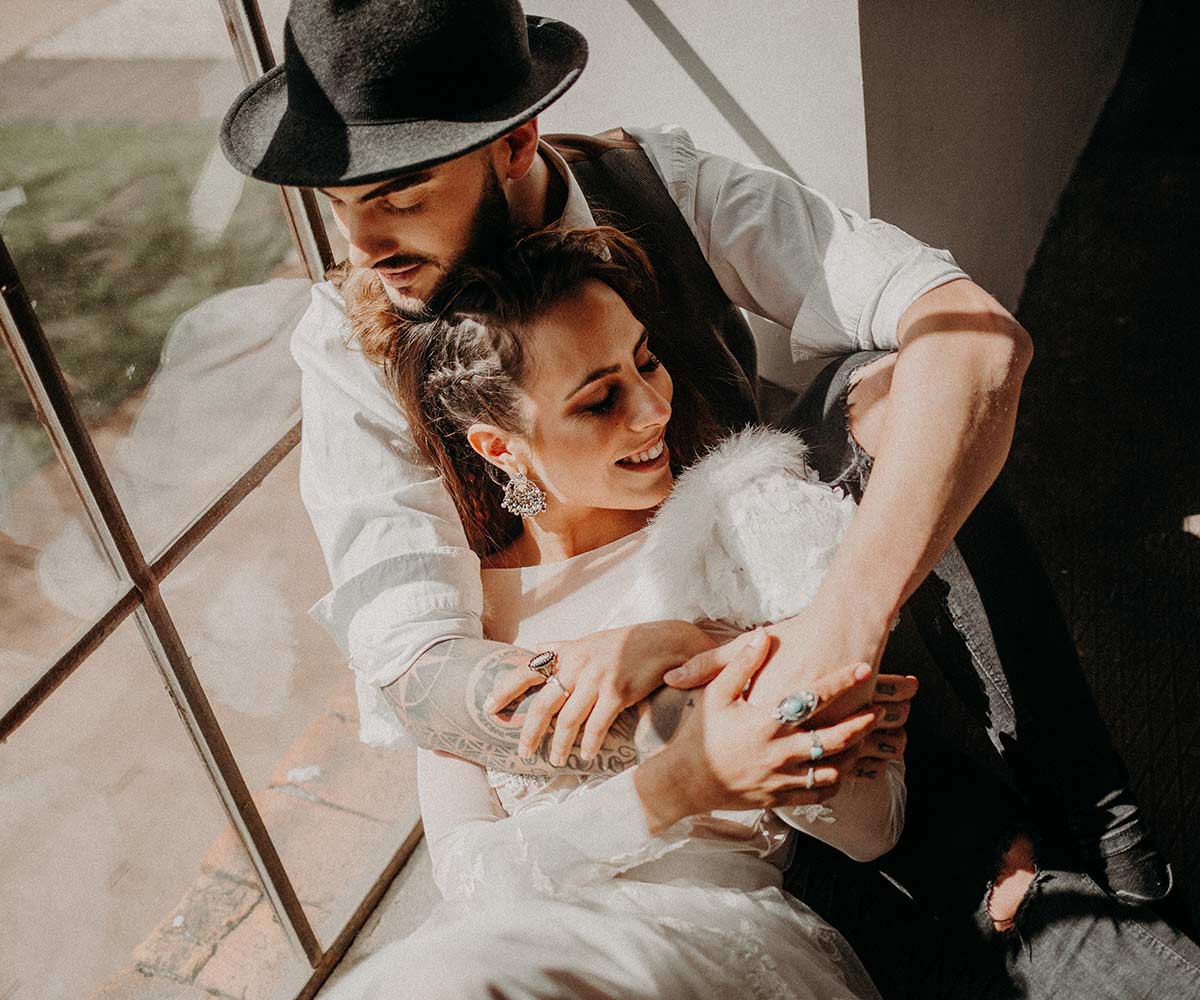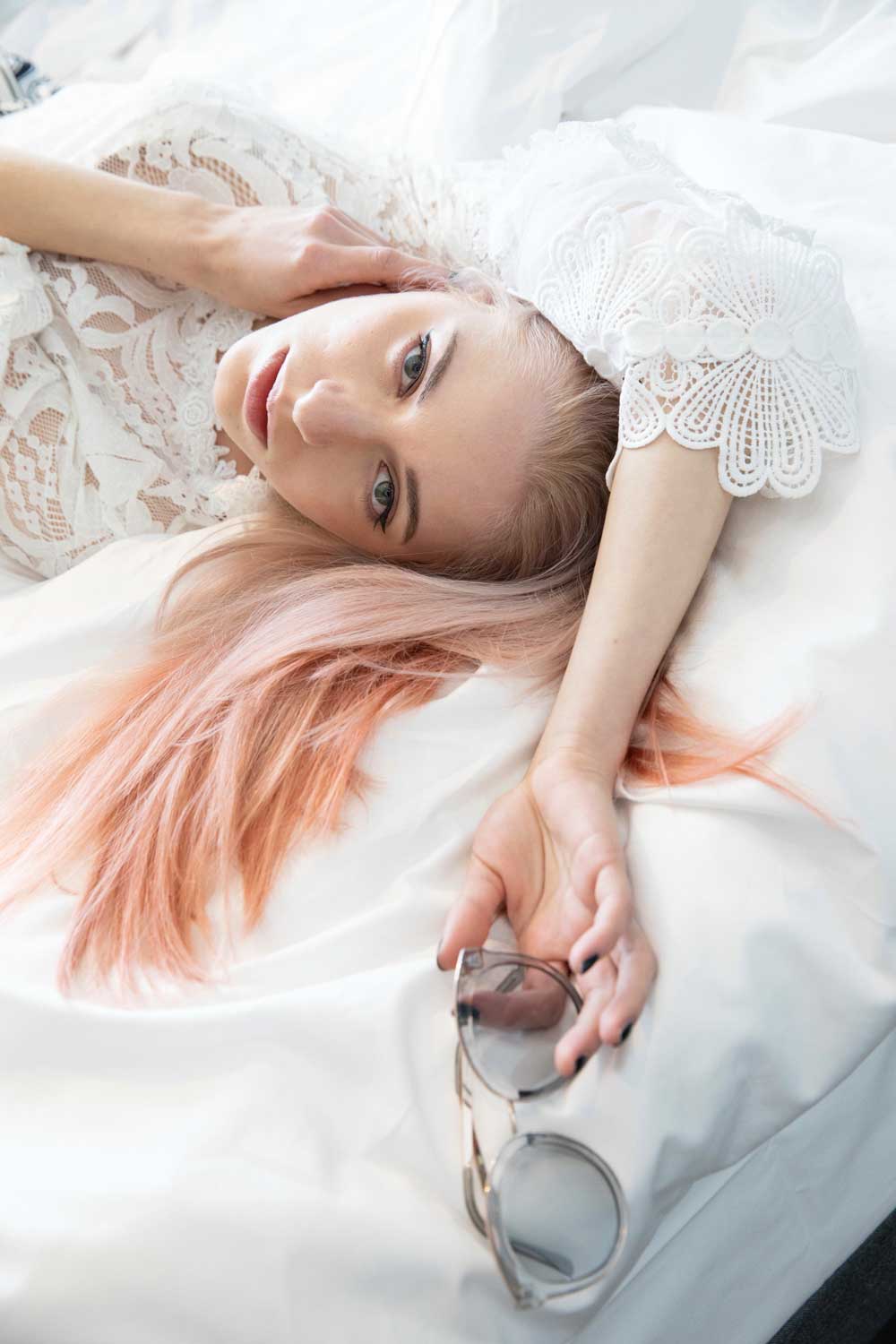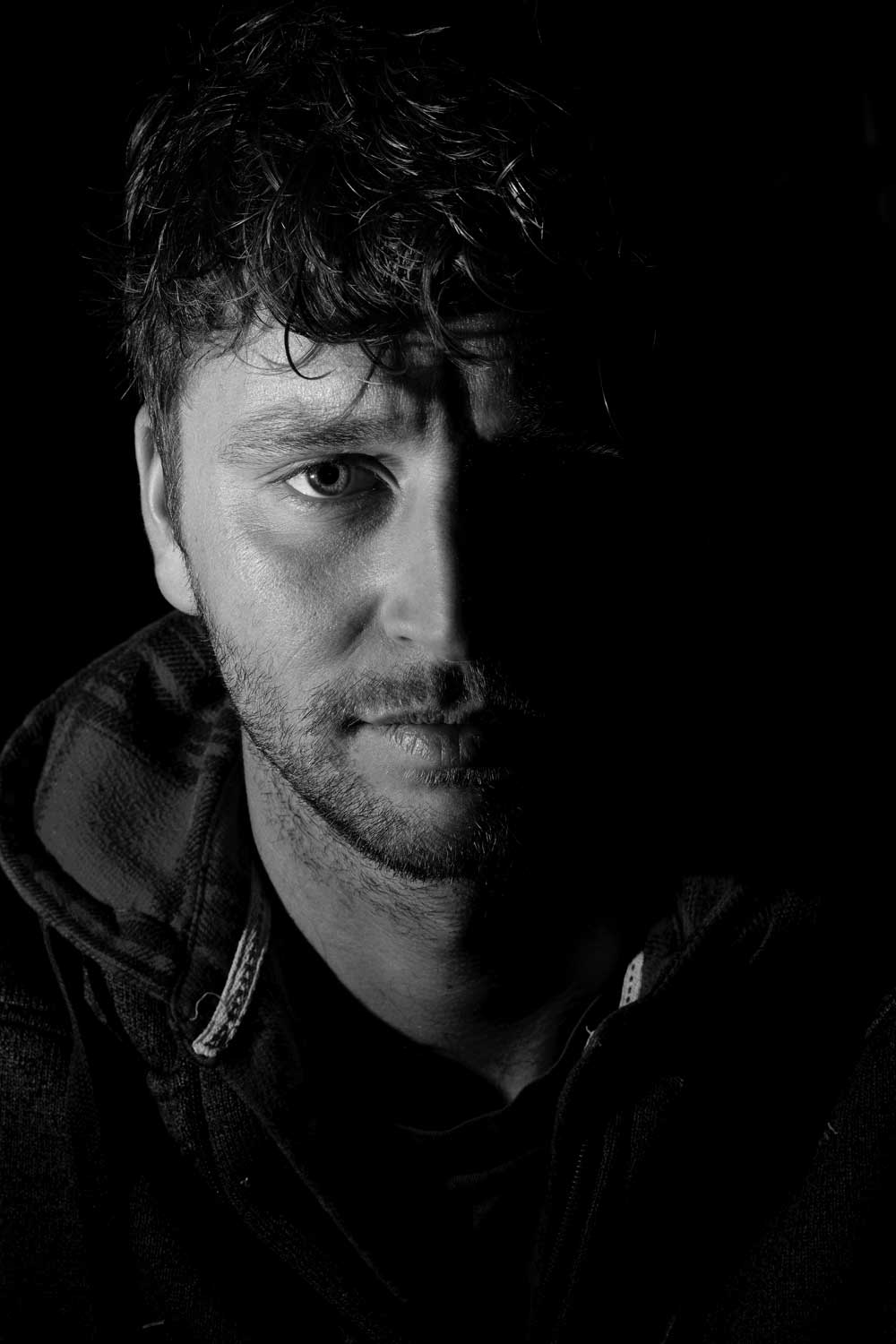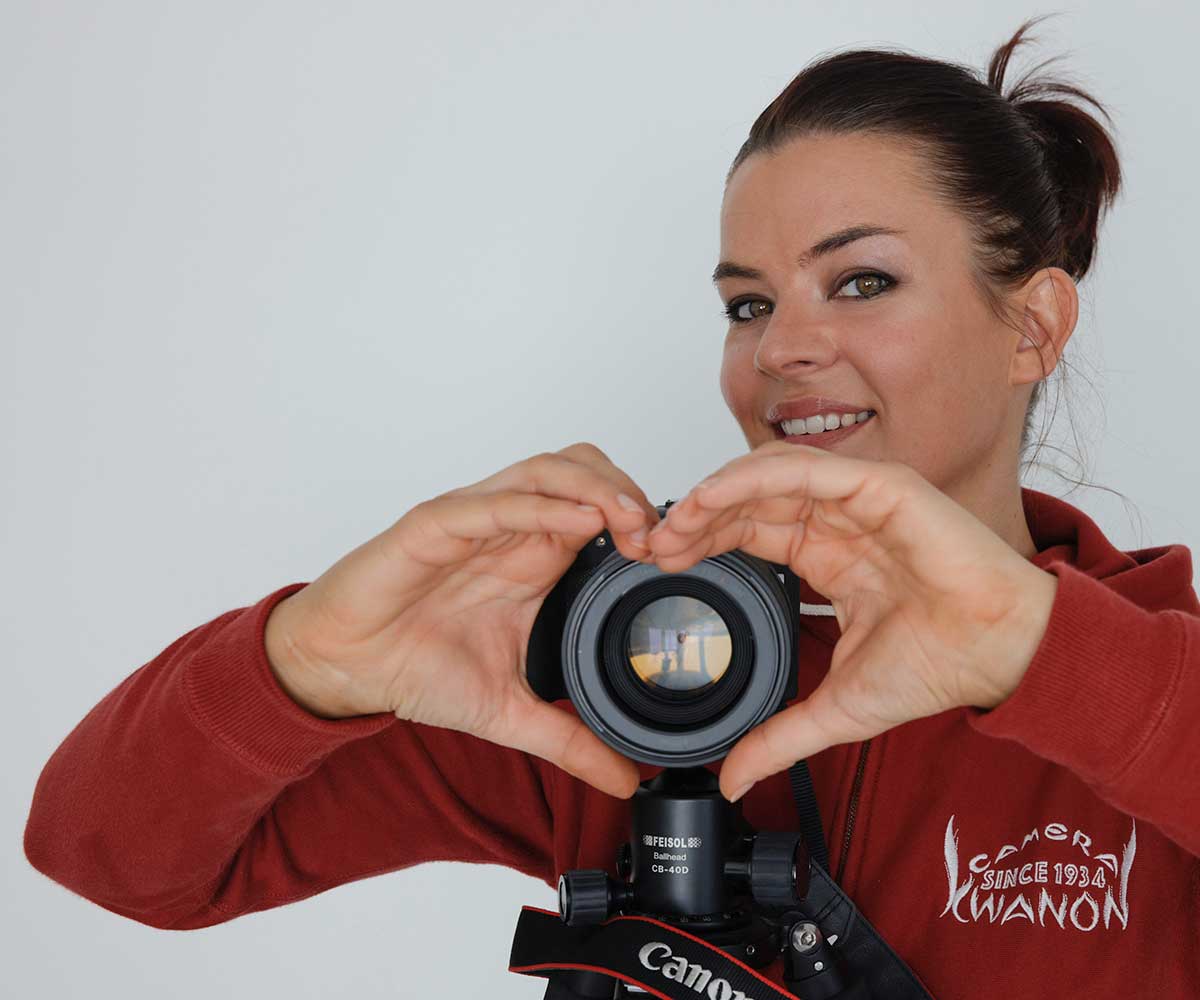Reading time approx. 5 minutes
Helpful?

How to take personal portrait photos - for Valentine's Day and other occasions
Surprise your loved one with a photo shoot for Valentine's Day. We explain what to look out for in terms of shooting technique, location and equipment.
Setting up the camera
For your first portrait sessions, choose a camera setting that you don't have to constantly check, so you can concentrate on your model. Portrait professionals prefer the following settings.
Scene mode 1: AV (Aperture)
You set the aperture and the camera selects the appropriate exposure time. Make sure that the scene is bright enough to prevent the camera from selecting too long an exposure time. With ISO set to Auto, the camera automatically selects the appropriate sensitivity. You can use exposure compensation to vary the subject in the direction of + (brighter) or - (darker).
Scene mode 2: M (manual) allows you to choose the combination of aperture and shutter speed. The camera automatically selects the appropriate ISO sensitivity when the ISO is set to Auto. This setting allows you to control both parameters and change them on the fly. The ISO responds to your settings and adjusts accordingly.
Autofocus
For dynamic scenes, i.e. when your model is moving in front of the camera, select the "AI Servo" autofocus mode. If the pose is seated, the One-Shot AF setting is recommended. Select Face Detection (if available on your EOS) or Single AF. Focus on either the eye nearest the camera or the eye that receives more light.
Tip: To get exactly the shot you want, use the camera's bracketing function. This will give you a lot of choice later... and just the smile you want.
Cut the head out of the background
Shooting with an open aperture is the best way to isolate your subject from the background. This effect can also be achieved with slower lenses. Please note the following "rules of thumb":
- The wider the aperture, the smaller the depth of field.
- The longer the focal length, the smaller the range of focus.
- The focus distribution is approximately 1/3 in front of and 2/3 behind the selected AF point.
- The further away the background, the blurrier it will be.
- The closer you are to the subject, the blurrier the background.
The location
Choose a place where your loved one feels comfortable. Maybe the location has a special meaning for you as well. Make sure the background doesn't distract from the person. It helps to check the location a few feet in each direction to see if there is a better perspective. Avoid lines or trees growing out of or through the subject's head.
The light and the look
Light tends to be softer in the morning and evening. Cloudy skies are ideal for photography as they do not cast harsh shadows. Even shadows or backlit shots are also attractive. Be sure to set your camera's white balance to match the lighting (for backlighting, select "Shadow" or "Cloudy"), even if you are shooting in RAW format. You'll want to be able to show off your images straight away during the shoot - this will give your loved one confidence.
In addition to white balance, you can use the EOS Picture Styles function to give your photos a personal touch. Choose Portrait for beautiful skin tones or Monochrome for a classic black and white look.
To illuminate your model even better, you can use a flash as an additional light source or modulate the existing light with a light shaper (reflector).
The pose
A portrait looks most personal when you meet your model at eye level. Choose a location that allows you to do this. If your subject is more relaxed with eye contact, use the Live View function on your camera.
The pose should suit the person. For each pose, think about the best angle to support the message you want to convey. Arms and hands have a big impact on the pose. They create visually interesting shapes and lines and guide the viewer. In standing poses, the standing leg position looks relaxed, elegant and confident. A slight bend in the hips emphasises the S-shape of the body.
Ensure a relaxed posture
If your model tends to tense up and adopt an awkward posture, give the pose a funny name. For example, if the person unconsciously raises their eyebrows and wrinkles their forehead, say "Don't scowl like Grumpy Smurf, honey" to keep the mood light. You will see the joy in the pictures later!


